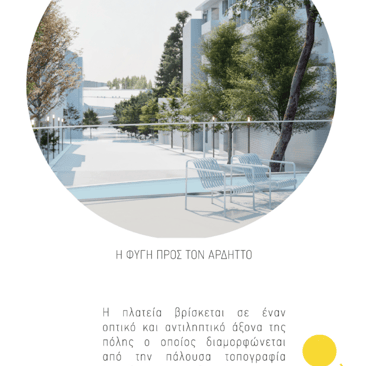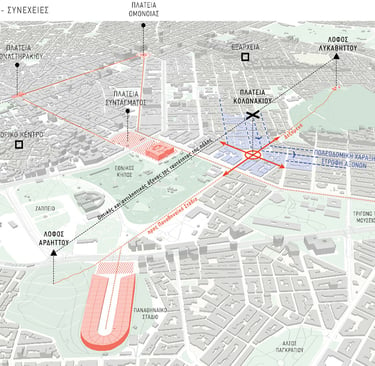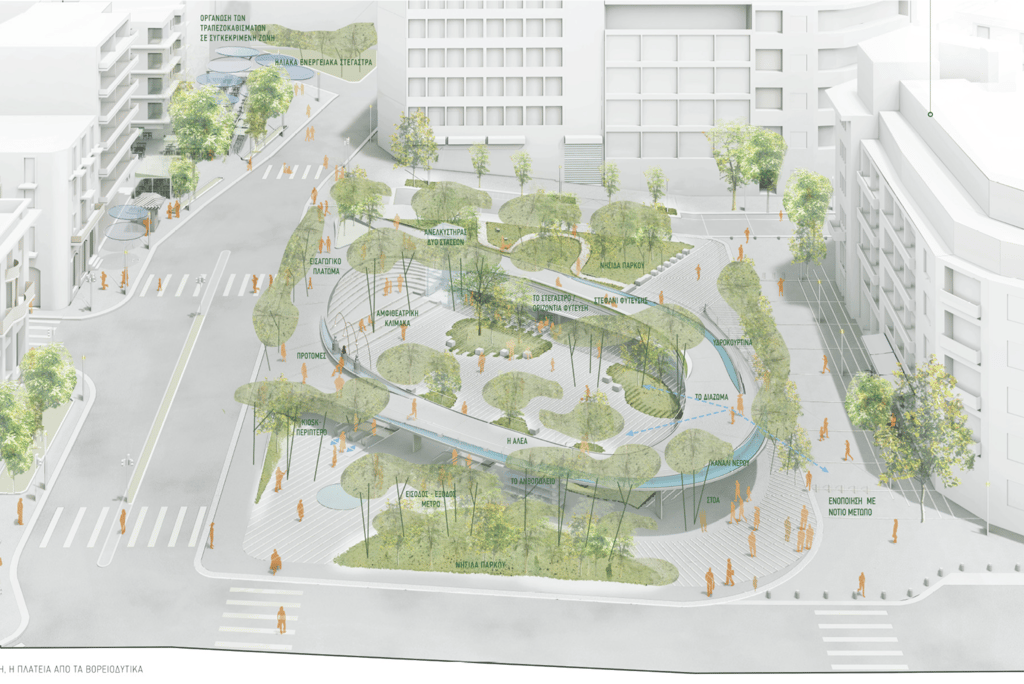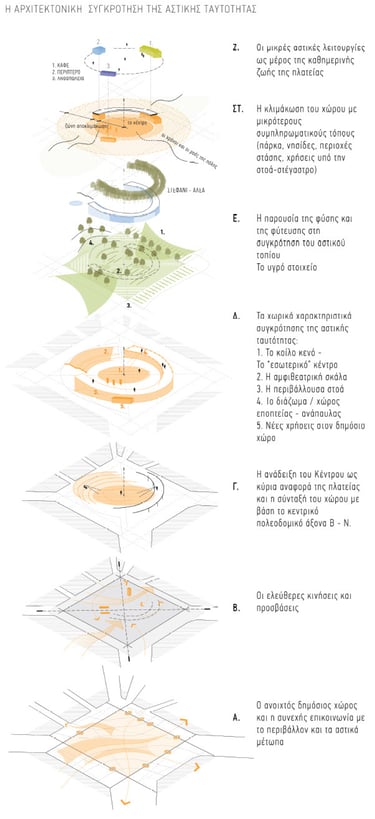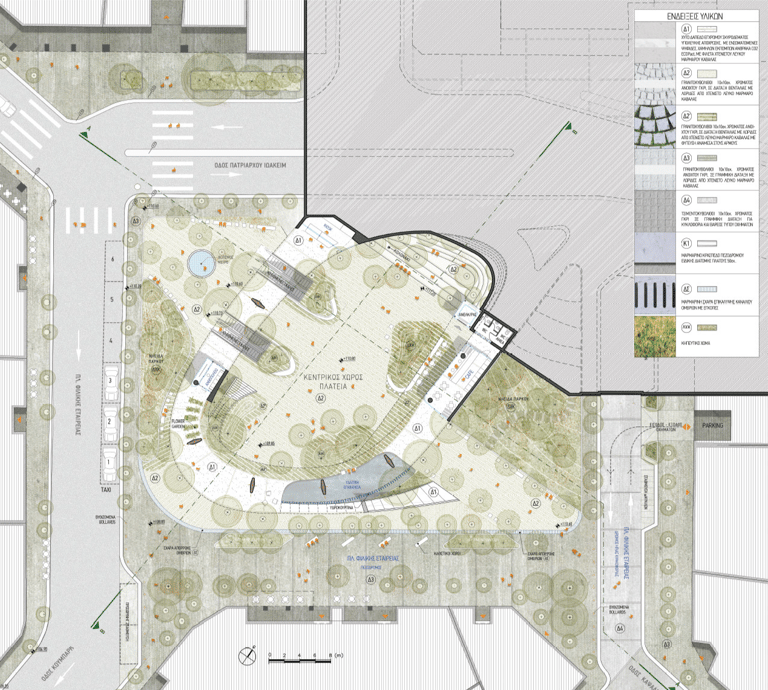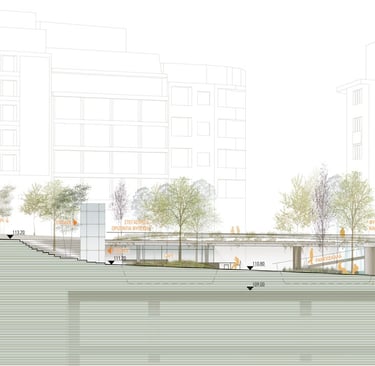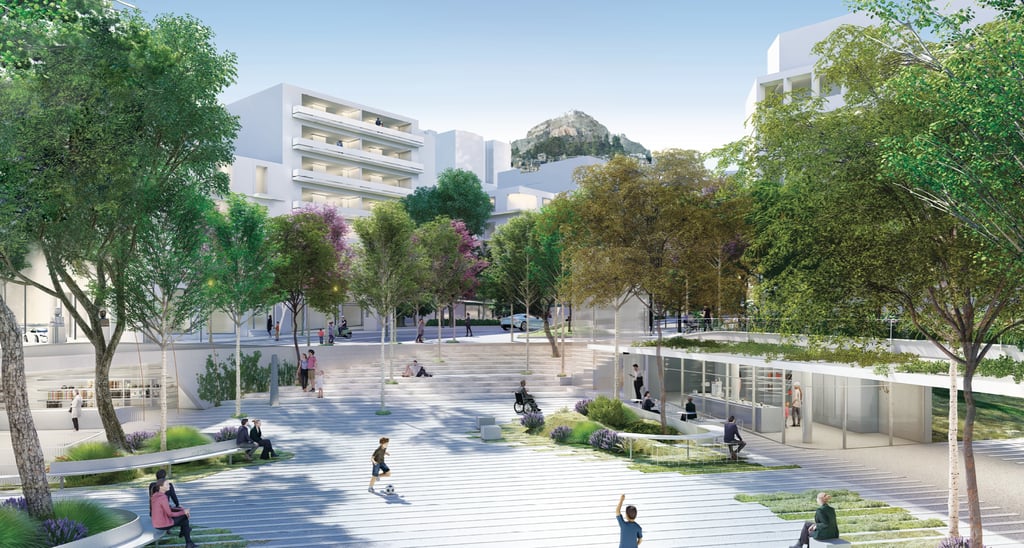1st PRIZE
Kolonaki Square
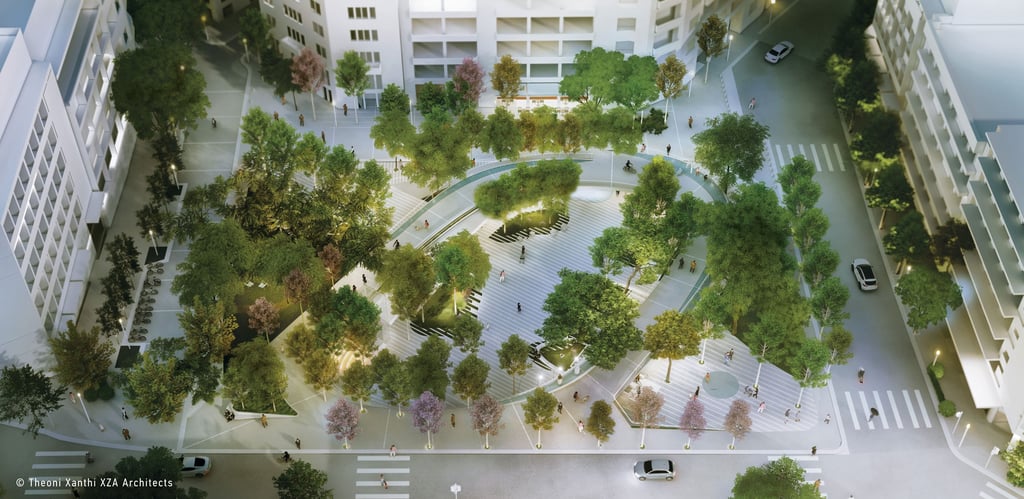

DATE: 2023
CLIENT: Attiko Metro S.A., Municipality of Athens
SECTOR: Civic Square /Park
LOCATION: Athens, Greece
SIZE: 80,000 sqft
STATUS: Concept Design
National Concept Architectural Competition
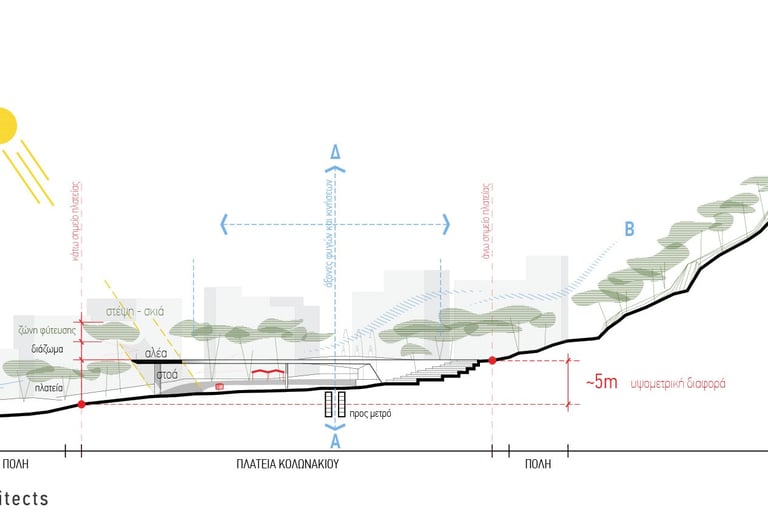

As the square will connect, via the metro, to destinations beyond its traditional borders, determining its urban identity necessitates emphasizing its self-presentation. The uniqueness of its location, where the slopes of Lycabettus meet, the vibrant presence of the northern sidewalks, the topographical relief extending to Herod Atticus Street and the Panathenaic Stadium, led to the adoption of the N-S axis as the central perceptual axis defining the city’s identity.
THE IDEA
The square’s formation relies on the major Lycabettus – Ardittos axis. The vistas, visible from the square, serve as orientation points, providing an understanding of the city’s large scale. Simultaneously, the diagonal routes of the nearby E-W axis (Kanari & Kapsali Str.), connecting Kolonaki to the City Centre, the areas of parks, museums, and Ampelokipoi area, are utilized as a second compositional axis of flow, communication, and approach, forming an informal meeting intersection at the centre of the square’s public space. The entrance and exit of the metro are situated on this axis, contributing to the square as a meeting place, interface, passage, and stop, recalling memories of everyday mobility.
The square’s design is influenced by the flowing topography of Lycabettus hill, creating a 5-meter elevation difference. To maintain a unified reference level that traditionally accommodates the urbanity of public life, allowing freedom of movement, activities, and usage changes, the square is divided into two levels. The upper level outlines a semicircular path with a focal point at Koumpari Str., an emblematic point between the hills—an open walk, the belvedere of the square.

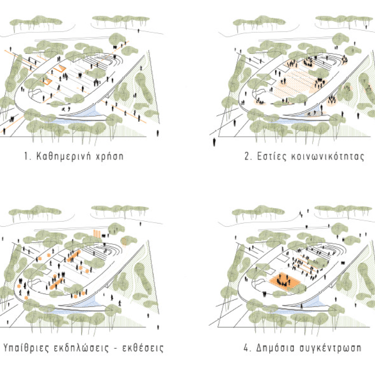
“Very interesting and bold proposal for the overall redesign of the square in relation to the surrounding urban fabric. It has successfully addressed the difference in elevation and accessibility. It demonstrates a solid understanding of environmental design, materiality, and the broader urban scale. Very good diagnosis of the square’s urban context and of the height differences, which inform the design approach. The main goals are to bring life back to the center of the square, to promote urban mobility and walking, as well as to restore the natural environment.”– Excerpt from the jury proceedings on the proposal.

